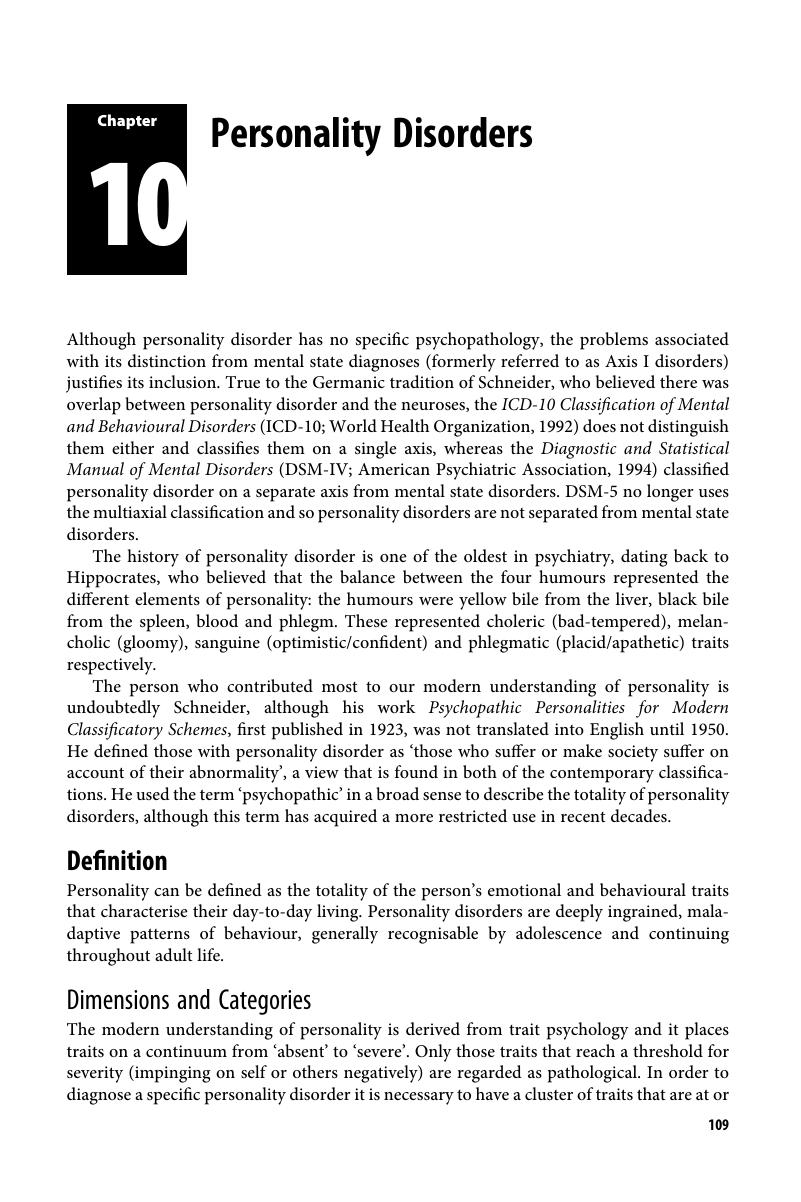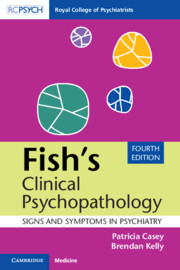Book contents
- Fish’s Clinical Psychopathology
- Fish’s Clinical Psychopathology
- Copyright page
- Contents
- Preface
- Chapter 1 Classification of Psychiatric Disorders
- Chapter 2 What Is Psychopathology? Controversies in Classifying Psychiatric Disorders
- Chapter 3 Disorders of Perception
- Chapter 4 Disorders of Thought and Speech
- Chapter 5 Disorders of Memory
- Chapter 6 Disorders of Emotion
- Chapter 7 Disorders of the Experience of Self
- Chapter 8 Motor Disorders
- Chapter 9 Disorders of Consciousness
- Chapter 10 Personality Disorders
- Book part
- Index
- References
Chapter 10 - Personality Disorders
Published online by Cambridge University Press: 02 January 2018
- Fish’s Clinical Psychopathology
- Fish’s Clinical Psychopathology
- Copyright page
- Contents
- Preface
- Chapter 1 Classification of Psychiatric Disorders
- Chapter 2 What Is Psychopathology? Controversies in Classifying Psychiatric Disorders
- Chapter 3 Disorders of Perception
- Chapter 4 Disorders of Thought and Speech
- Chapter 5 Disorders of Memory
- Chapter 6 Disorders of Emotion
- Chapter 7 Disorders of the Experience of Self
- Chapter 8 Motor Disorders
- Chapter 9 Disorders of Consciousness
- Chapter 10 Personality Disorders
- Book part
- Index
- References
Summary

- Type
- Chapter
- Information
- Fish's Clinical PsychopathologySigns and Symptoms in Psychiatry, pp. 109 - 123Publisher: Cambridge University PressPrint publication year: 2019



